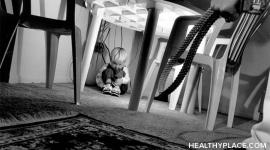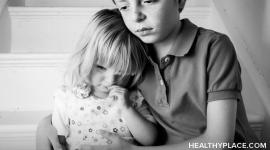Signs of Child Physical Abuse
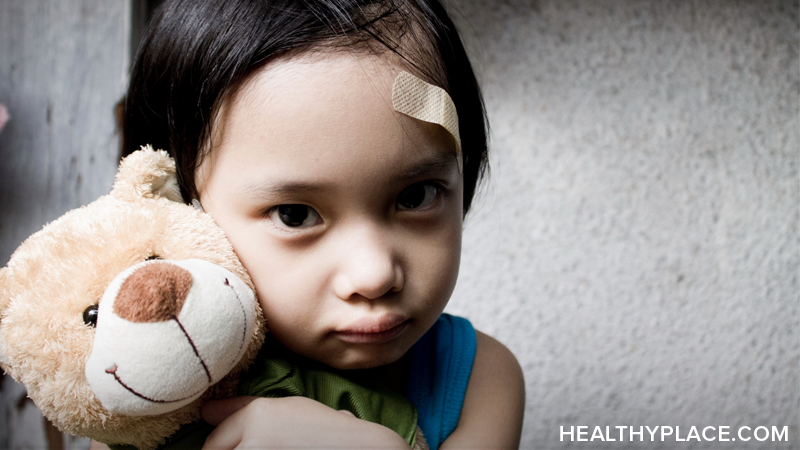
Signs of physical child abuse are easier to spot than other types of abuse, such as neglect or emotional abuse. In order to help an abused child, you've got to know how to recognize the signs. Just as the presence of one of the signs associated with diabetes doesn't mean the person actually has the disease, the presence of one sign of physical child abuse doesn't necessarily mean a child is suffering abuse. But – noticing just one sign of child abuse may hint that a closer look is in order.
Signs of Physical Child Abuse
While people rarely openly abuse children, certain signs of physical child abuse can indicate a need for further investigation. Below are some signs of physical abuses. Please note that these basic signs may not be readily apparent in some physically abused children.
Visible signs of physical child abuse
- Unexplained or frequent bone fractures
- Black eyes
- Bruises in areas of the body not typically injured by accident vs normal childhood activities
- Human bite marks
- Burns on the arms, legs, or around the genitalia
- Cigarette burns
- Bruises shaped like objects, such as a hand or belt buckle
- Unexplained lacerations or cuts
- Marks around the wrists or ankles, indicating someone may have tied the child up
Behavioral signs of physical child abuse
- Depression
- Withdrawal from friends and social activities
- Poor (unbelievable) or inconsistent explanations of injuries
- Unusual shyness
- Avoidance of eye contact with adults or older kids
- Excessive fear of caretakers – this could be fear of the parent(s) or of a nanny or babysitter
- Antisocial behavior (older kids) like truancy, drug abuse, running away from home
- Child seems overly watchful, on edge, as if anticipating something bad is going to happen
- Expresses a reluctance to go home
Parental or Other Caregiver Behavior Indicating Possible Child Abuse
- Demeans the child. Sees him or her as wholly bad and burdensome
- Expresses little concern for the child and his or her performance in school, visible injuries, etc.
- Rarely touches or displays physical affection toward the child
- Thinks of the relationship as completely negative
- Verbalizes dislike for the child
Physical Child Abuse Images
It's important to look at some physical child abuse images, so you can recognize the injuries if you come across them. If you've never seen a child with a cigarette burn, you may not recognize it as such right away.
The image below shows a child with the circular burn typically caused by a cigarette.
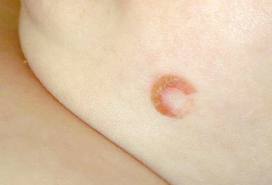
Photo credit: reference.medscape.com
Notice the bruising on the face of this child, which resembles a handprint.

Photo credit: laboratoryconsultationservices.com
The child in this physical child abuse image shows laceration marks from being whipped.
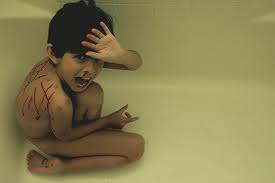
Photo credit: childabuse.com
It's important to note that these and many physical child abuse images you may find online and elsewhere represent readily apparent injuries. Not all abused children have injuries on exposed areas. Some abusers cleverly inflict the injury on areas of the body usually covered by clothing.
If a child whimpers in pain from a hug or other gentle touch, he or she may have an injury concealed by clothing. Also, it's rare for a young child to accidentally get a black eye during normal play activities, although it does happen on occasion. Observe the parent (or other caregivers) and child relationship. Does it seem unusually strained? Unloving? Does the adult in the relationship seem to harbor resentment or disdain toward the child?
Ask the adult caregiver about the child's injuries after you've asked the child. Inconsistency or unbelievable stories as to how the injuries occurred may warrant closer investigation by proper authorities, such as your local Child Protective Services or other similar agency.
APA Reference
Gluck, S.
(2021, December 17). Signs of Child Physical Abuse, HealthyPlace. Retrieved
on 2026, January 21 from https://www.healthyplace.com/abuse/child-physical-abuse/signs-of-child-physical-abuse


